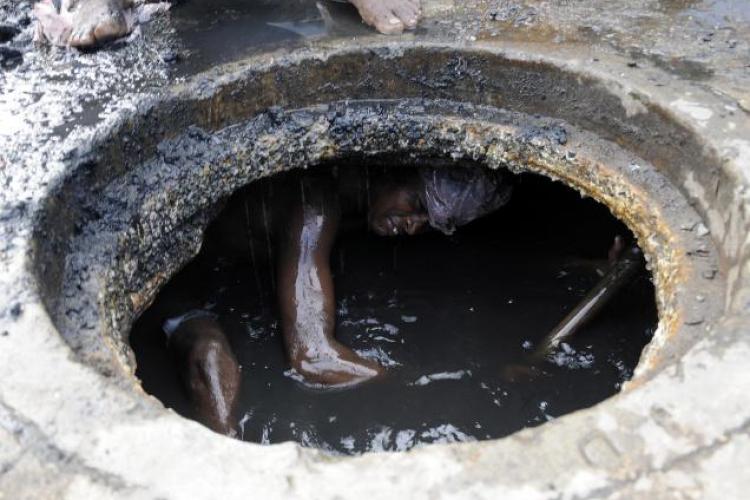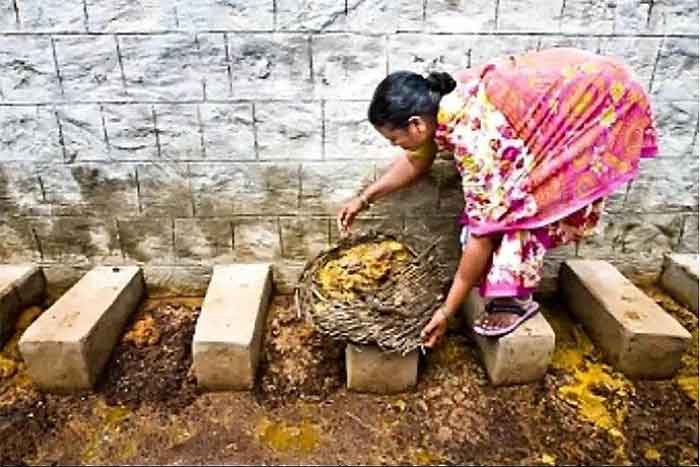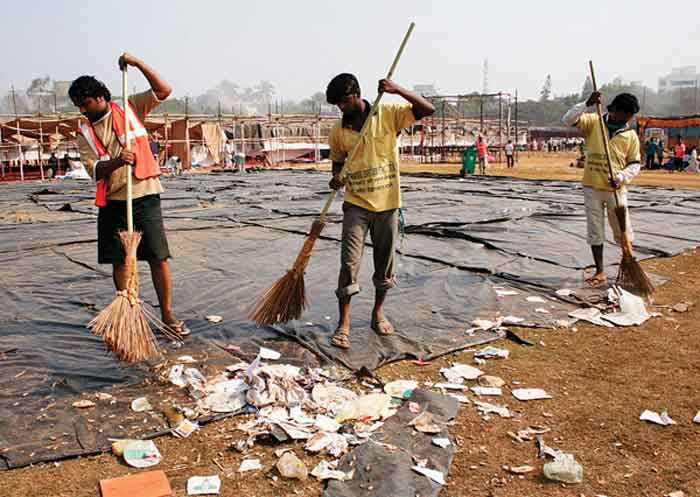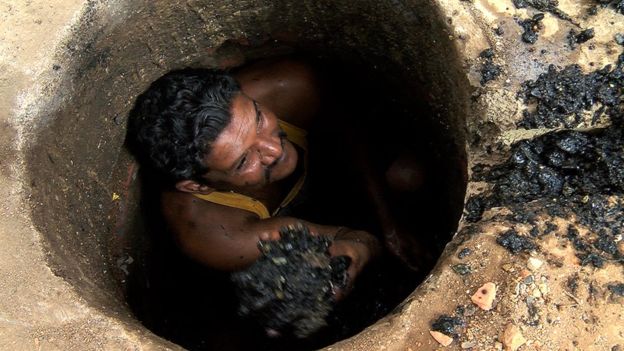
While the dalit community has been always known for higher levels of poverty as well as social discrimination, even within the dalits there is a sub-section known for even worse levels of poverty as well as social discrimination. This is the section which was traditionally involved in manual scavenging.
The shocking injustice they have suffered from over the years has been widely recognized leading to a ban on manual scavenging. At the same time there is urgent need for the rehabilitation of those engaged in manual scavenging. Hence a self-employment scheme for the rehabilitation of those engaged in manual scavenging was drawn up. The allocations and the expenditure for this scheme are shown in the Table below—
Table-Union Budget for Self-Employment Scheme for Rehabilitation of Manual Scavengers ( in Rs. Crore)
Year——Budget Estimate———-Actual Expenditure
2014-15 439 0
2015-16 461 0
2016-17 10 0
2017-18 5 5
2018-19 20 86
2019-20 110 85
2020-21 110 17
2021-22 100 43(RE)
Total for 8
Years 2014-22 1255 236
Note—For the last year 2021-22 the actual expenditure is not yet available and so the revised estimate or RE has been used which is likely to be quite close to the actual expenditure.
Source-Various budget documents.
By Budget Estimate we mean the original allocation made when the budget is presented. It is clear from this table that the actual expenditure over the last 8 years ( Rs 236 crore) has been only about 19% of the allocations announced in the form of Budget Estimate (Rs. 1255 crore). This is shocking considering that perhaps this is the scheme which is most closely related to the welfare of the poorest of the poor.
If we also look at the latest budget for the year 2022-23 then the Budget Estimate is just Rs. 70 crore, which is just 15% of the peak year allocation—the Budget Estimate for 2015-16 was Rs. 461 crore.
In fact the budget allocations and actual spending for this extremely important scheme have been most arbitrary, unpredictable and uncertain. For such an important national scheme to be implemented properly, it should be reasonably assured of certain funding as a minimum. Only then you can plan properly and establish the infra-structure, the expertise and the womanpower for the scheme.
After all, people have to be identified, approached and meetings have to be held with them regarding what sort of self-employment will work best for them. All this has to be done in the poorest and most neglected hamlets and often in very remote areas at the national level.
Here it may be mentioned that the work of identifying all deserving persons to be covered under this scheme is not an easy one as the most marginalized section of people are involved here and often the dominant persons may even try to deny their existence. Also while the old form of manual scavenging has been decreasing in a significant way, new forms have emerged and these have to be considered too.
As rehabilitation will not work in isolation, the wider community also has to be consulted and prepared for this. The support of community leaders has to be obtained. All this takes time, and there should be certainty that once the preparations are being made the necessary funds for the actual rehabilitation will be forthcoming. Trainings have to be arranged in various areas of self-employment. Perhaps some new institution has to be created for this, or else existing institutions which will do this with the proper spirit have to be identified. Once so many people are being contacted and such high hopes of good rehabilitation are being raised then there has to be certainty that funds will be definitely available and there will be no let down. So there should be certainty of funds and an assurance that while there may be small changes but fund availability will not fall below a certain level.
As against such a need what do we see in reality? The huge and arbitrary changes from year to year do not make any sense at all, and it will certainly be very difficult to implement a well-planned scheme with continuity when fund availability is so arbitrary. Within a short period the allocation has ranged from Rs. 5 crore to Rs. 461 crore annually, while the actual expenditure has ranged from 0 to Rs. 86 crore, not even once reaching 3 digits.
Here it may be pointed out that the latest national survey on manual scavengers was conducted in 2018, and after this there should have been a stepping up of this scheme but what we actually find in 2020-21 is that against the Budget Estimate of Rs. 110 crore the actual expenditure goes down to the astonishingly low level of Rs. 17 crore. It is due to such terrible neglect that during the COVID days there were shocking reports of some persons earlier engaged in manual scavenging saying that they have not eaten for days as no alternative employment has been provided to them.
What is more, there was actually even greater need for stepping up the scheme as the estimates that became available in the 2018 census were widely believed to be big under-estimates. In fact the indicated level of this work as revealed in the socio-economic caste census 2011 for just the rural areas was about 4 times higher than what was indicated in the 2018 census, and for rural plus urban areas would have been higher.
Some years back while reporting on a small project of such rehabilitation in Jalaun district (UP) implemented by a voluntary organization Parmarth, I realized what a deeply heart-warming experience it can be for those engaged in manual scavenging to find new sources of employment with dignity. So clearly this scheme of rehabilitation can be extremely enriching and creative, but to achieve success this must get much better support from the government, in terms of funds but also in terms of expertise and overall sincerity. Organizations and persons working with great sincerity and commitment should also be involved in this.
Bharat Dogra is Honorary Convener, Campaign to Save Earth Now. His recent books include A Day in 2071 and Navjeevan.













































